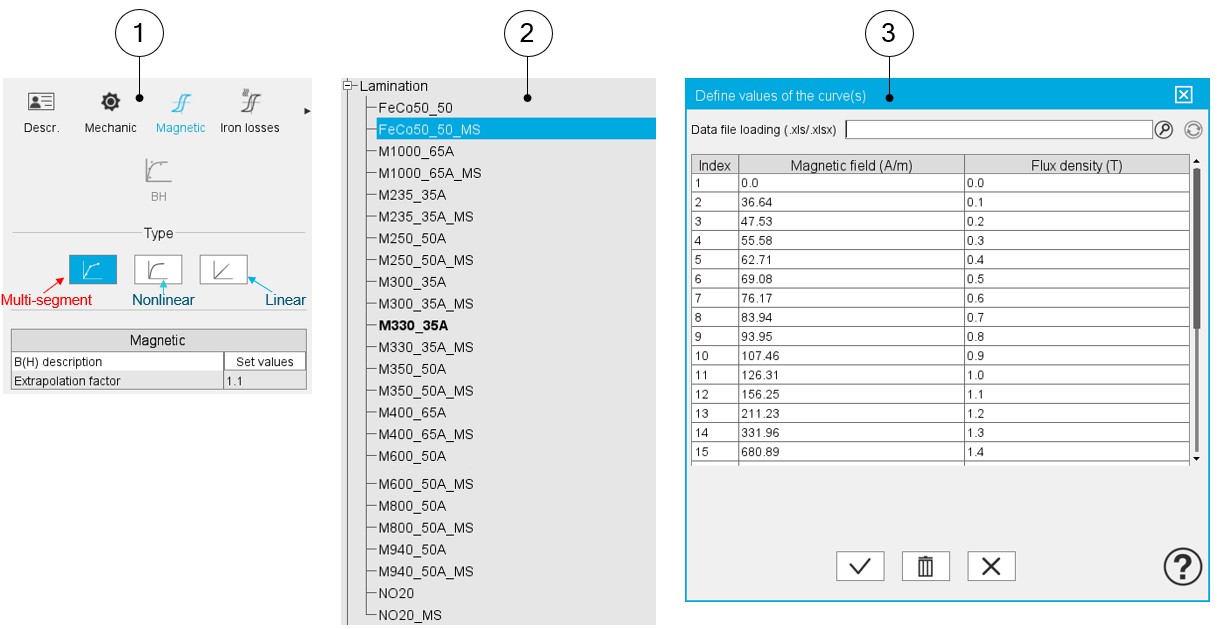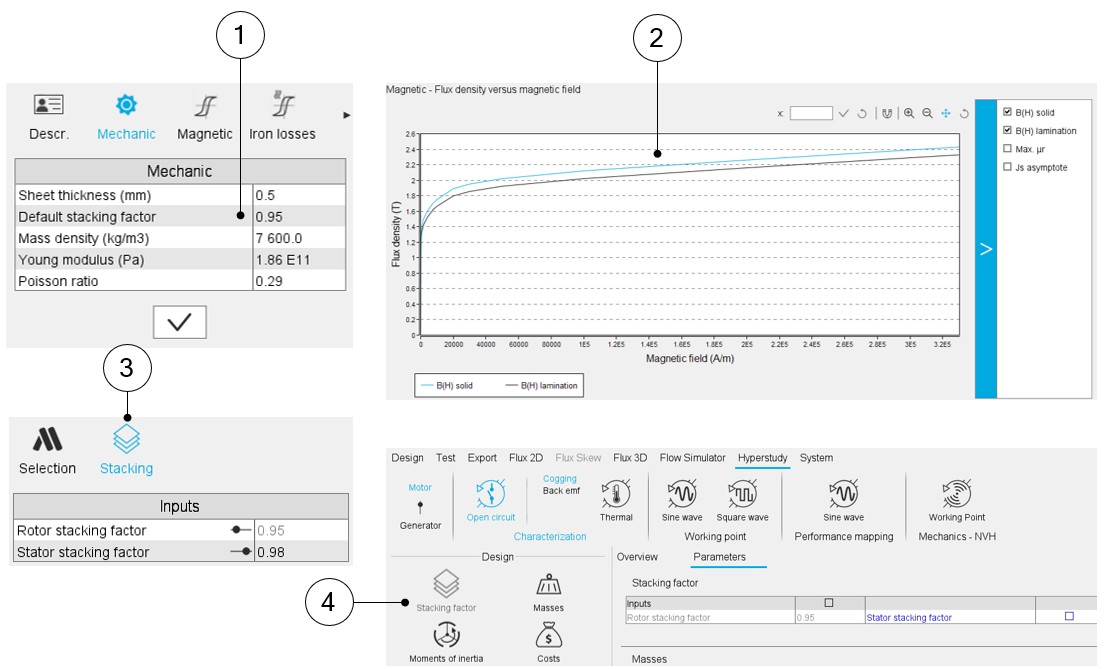Material management improvements
Introduction
In the current version of FluxMotor, major improvements have been made for the material management. It is now possible to use the multi-segment model to describe lamination and adjust the stacking factor of that lamination within the design environment of FluxMotor. These improvements are promising to bring the user experience to a higher level in FluxMotor, more accurate and more flexible.
Multi-segment lamination model
- Multi-segment: by providing a list of B-H points
- Nonlinear: by proving the three coefficients of the nonlinear analytical model
- Linear: by proving the slope of the B-H curve
The database of lamination within Material Manager is also enriched with the addition of laminations defined by the multi-segment model. Users now have 13 new laminations added.
 |
|
| New model of lamination in FluxMotor | |
| 1 | Multi-segment model added to the Magnetic section of lamination |
| 2 | Three new lamination templates added, the NO20 coming along with both nonlinear and multi-segment models |
| 3 | The table format allowing defining the multi-segment model |
The computing time of FluxMotor tests is not impacted by the new multi-segment model. In some cases, users can even observe a better computing time performance with this model compared to the nonlinear model. This result is highly beneficial for users, as the test results are closer than ever to reality without any sacrifices for computing time.
Management of the stacking factor at the design stage
The stacking factor of a lamination can now be modified directly in the design context of Motor Factory.
The workflow with a new user lamination is comprehensive. The user will define a default stacking factor for the lamination in Material Manager. Then, use it for any motor in Motor Factory and adjust the stacking factor in the same environment if users are not happy with the default value.
By the fact that the stacking factor is now adjustable in Motor Factory, it can be considered as input of any HyperStudy connectors. Consequently, users can study the influence of the stacking factor on machine performance automatically via HyperStudy.
 |
|
| New way to manage the stacking factor in FluxMotor | |
| 1 | Give the default value of stacking factor in Material Manager |
| 2 | The solid and lamination B-H curves are provided automatically |
| 3 | Adjust the stacking factor of both rotor & stator in Motor Factory; when the value is greyed, it takes the default value of the lamination |
| 4 | Stacking factor can be considered as input for HyperStudy connectors if the user mode is selected |